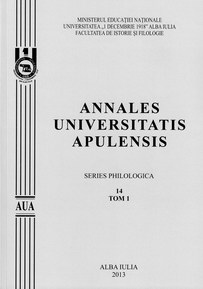The integration of English borrowings in Romanian: some quantitative considerations
The integration of English borrowings in Romanian: some quantitative considerations
Author(s): Arina GreavuSubject(s): Language and Literature Studies
Published by: Universitatea »1 Decembrie 1918« Alba Iulia
Keywords: borrowing; morphosyntactic integration; word class; grammatical category; inflection; bare form; social integration
Summary/Abstract: When words are transferred from one language into another, they are usually adapted so as to conform to the morphosyntactic rules of the recipient language. The integration of borrowings is governed by a number of linguistic and psycho-social factors which combine according to the specific circumstances of the contact situation. The factors most often discussed in the literature are: the word class of the loanword and its role in the borrowing language (to fill lexical gaps or to double already existing words), the frequency with which it is used and its age of existence in the language, the typology of the two languages in contact, and not last, the bilingual ability and attitude towards borrowing of the recipient language speakers. However, none of these factors can be expected to act categorically in borrowing situations, their complex interplay rendering any deterministic approach to the study of linguistic integration untenable. In this context, the present paper attempts to quantitatively investigate the integration of English borrowings in Romanian, based on a corpus of contemporary journalistic prose (“Capital” magazine for the year 2005), and draw some conclusions regarding the influence of the different factors discussed in the literature as influencing this process. Following a process of data elicitation, filtering, categorizing according to length and internal complexity, and part of speech tagging, the borrowings identified in the corpus are analyzed in relation to their morphosyntactic adaptation to Romanian. In detail, we look at the way in which borrowed nouns, adjectives, and the corresponding phrases are marked for number, definiteness and case, and at the way in which verbs are included into one of the conjugation classes of Romanian, or receive the relevant suffixes for mood, tense, number and person. Special situations are represented by the use of English inflectional morphemes (e.g. the -s plural ending) on borrowed words, and the employment of bare forms, i.e. words lacking Romanian morphological marking in contexts requiring it. Quantitative aspects of loanword integration include the numerical representation of various forms (integrated, bare, marked with English inflections) in the total, the diffusion of these forms or their token frequency in the corpus, and the percentages held by morphologically marked words in borrowed and in native material.
Journal: Annales Universitatis Apulensis. Series Philologica
- Issue Year: 14/2013
- Issue No: 2
- Page Range: 435-450
- Page Count: 16
- Language: English

